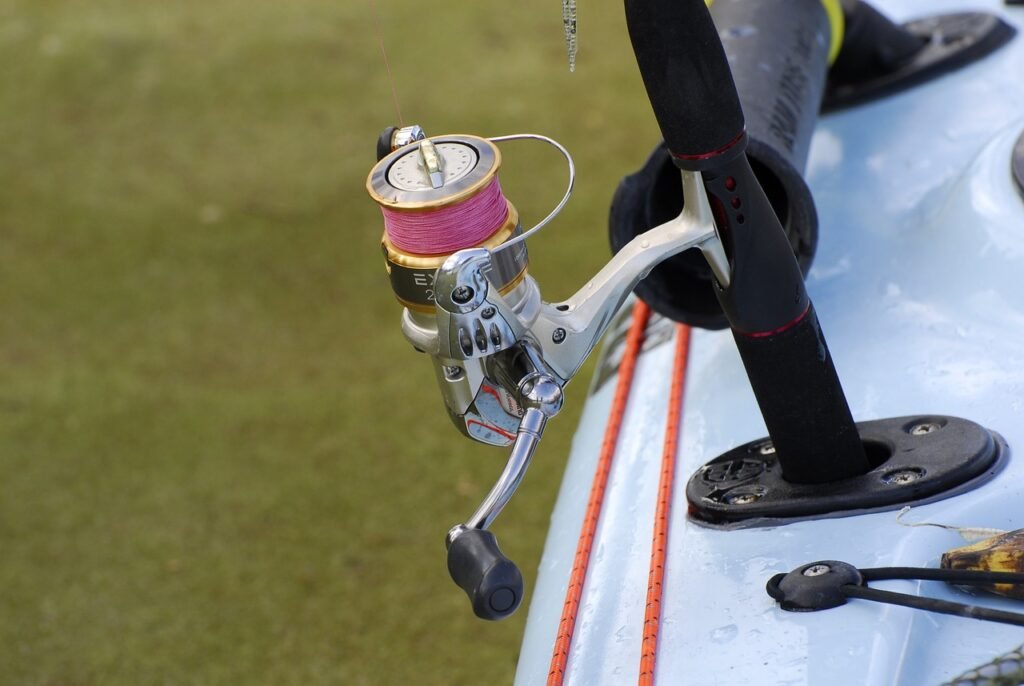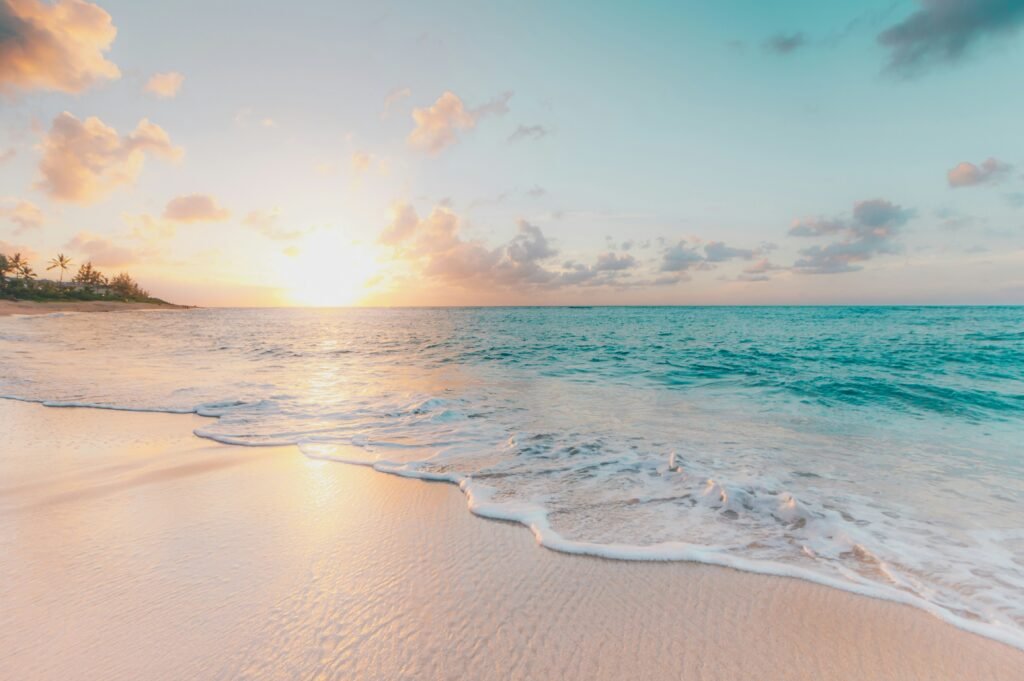You wake up at the crack of dawn, the sky painted in hues of pink and orange as the first light of day begins to stretch across the horizon. The air is crisp and invigorating, filled with a quiet promise of adventure. The scent of saltwater mingles with the morning dew, a reminder of the ocean’s proximity. Your gear is meticulously packed, each piece of equipment chosen with care, and your boat is ready, gently bobbing at the dock, awaiting your arrival. But as you sip your morning coffee, savoring its warmth, you glance at the weather forecast on your phone. The excitement in your chest falters slightly, the adrenaline tempered by a creeping uncertainty as you wonder, “What will the weather be like today?”
Understanding weather patterns can make the difference between a successful day on the water and a disappointing outing. Saltwater fishing is particularly susceptible to the whims of the weather, influenced by an intricate dance of wind and waves, tides and temperatures. A sudden change in the wind direction can transform calm seas into turbulent waters, while an unexpected cold front might send fish into deeper, less accessible areas. Join me as we delve into the intricate world of weather patterns and saltwater fishing, exploring how to interpret forecasts, identify signs of shifting conditions, and plan for the elements. With the right knowledge and preparation, we can turn every trip into a memorable and rewarding experience, brimming with the thrill of the catch and the beauty of nature.
The Importance of Weather in Saltwater Fishing
When it comes to saltwater fishing, the weather is more than just a backdrop; it’s a key player that can significantly influence fish behavior, water conditions, and your overall fishing strategy. Fish are highly sensitive to their environment, and any changes in weather can trigger them to either feed or seek shelter.
For example, a cold front moving through can cause fish to become sluggish and less likely to bite, as the sudden drop in temperature can make them conserve energy. On the other hand, a warm front might encourage more active feeding because warmer waters can increase fish metabolism, making them more eager to hunt for food. Additionally, different weather patterns can affect water clarity and current strength, both of which are crucial factors in saltwater fishing.
Understanding these nuances can help you be in the right place at the right time, maximizing your fishing opportunities. Knowing how to read the weather and anticipate its effects on fish can turn a good fishing day into a great one, ensuring that you make the most out of every trip to the water. Whether you are an experienced angler or a novice, adapting your strategy based on weather conditions can greatly enhance your chances of success.
Reading the Sky: Cloud Cover and Sunshine
Cloud cover plays a significant role in saltwater fishing, influencing fish behavior and feeding patterns. On cloudy days, the lack of direct sunlight can make fish more comfortable feeding in shallower waters where they might otherwise feel exposed. The diffused light creates a more uniform environment, making it harder for fish to spot predators, which gives them an extra sense of security. This can lead to increased activity and feeding in areas that might be less frequented on bright, sunny days.
Conversely, on sunny days, the intense sunlight can drive fish to retreat to deeper waters or seek shade under structures such as docks, piers, and mangroves. The bright conditions can make fish feel more vulnerable, leading them to hide in shaded areas or within underwater plants and coral formations. For anglers, this means adapting their strategy and equipment to match the conditions. Polarized sunglasses can be a game-changer, helping you see below the surface glare and spot fish hiding in the shadows. By reducing glare and enhancing visibility, these sunglasses allow you to better locate fish and observe their movements, increasing your chances of a successful catch.
Understanding these nuances and adjusting your fishing techniques according to the weather can make a significant difference in your saltwater fishing experience, leading to more productive and enjoyable outings.
Winds and Waves: Navigating the Waters
Wind direction and speed are crucial factors in planning your saltwater fishing trip. A gentle breeze can create a ripple effect on the water’s surface, often stimulating fish to become more active, as the movement of the water can mimic the actions of smaller prey. This can be particularly beneficial when targeting species such as mackerel or sea bass, which are known to respond to such conditions. However, strong winds can make for rough seas, challenging both navigation and casting. High winds can create large waves and turbulent water, which not only makes it difficult to maintain a steady position but can also reduce visibility and spook the fish.
As a rule of thumb, offshore winds (blowing from land to sea) tend to flatten the ocean’s surface, making for smoother conditions which are ideal for trolling and using light tackle. This can be a great advantage when fishing in deeper waters where stability is key. Onshore winds (blowing from sea to land) can push baitfish closer to the shore, attracting larger predators such as tuna, sharks, and marlin. This can create exciting opportunities for shoreline anglers and those fishing from piers.
Additionally, wind direction can affect water temperature and current patterns, which in turn influence fish behavior and feeding times. Checking the wind forecast and planning your route accordingly can save you from battling against nature’s forces, ensuring a more enjoyable and productive fishing experience. By understanding and anticipating how wind conditions affect the marine environment, you can increase your chances of a successful catch and make the most out of your time on the water.
The Tide’s Influence: Timing Your Trip
Tides are perhaps one of the most critical aspects of saltwater fishing. The rise and fall of the tides influence fish feeding patterns and habitat availability. High tides can bring fish into shallower areas to forage, providing anglers with the opportunity to target a wider range of species. Conversely, low tides often force fish to congregate in deeper channels and holes, making these areas prime spots for fishing during these times.
A tide chart is an indispensable tool for any saltwater angler. By understanding the timing and magnitude of tides, you can plan your fishing trips to coincide with peak activity periods. For instance, fishing during a rising tide can be particularly productive as fish move in to feed on baitfish and other prey. Additionally, some species are more active during specific tidal phases, so knowing the best times to target your desired catch can significantly improve your success rate. Furthermore, understanding tide patterns can also help you navigate safely, avoiding potential hazards such as sandbars or submerged rocks that may be exposed or hidden depending on the tide.
Temperature Matters: Seasons and Water Conditions
Water temperature is another vital factor that affects fish behavior. Most saltwater fish have specific temperature ranges within which they thrive, and understanding these ranges is crucial for successful fishing. For example, species like striped bass prefer cooler waters, often found in areas with strong currents and lower temperatures. On the other hand, species like tarpon and bonefish are more active in warmer conditions, where they can often be seen swimming in shallow, sun-warmed flats.
Seasonal changes also play a significant role in determining where to fish. During the warmer months, many fish may migrate towards deeper, cooler waters to escape the heat and maintain their preferred body temperature. Conversely, in colder seasons, fish might seek out warmer, sunlit shallows where the water temperature is more comfortable. These movements are often predictable and follow a pattern that experienced anglers can anticipate.
Understanding these seasonal patterns can help you target the right species at the right time of year. For example, winter can be an excellent time to fish for species that prefer warmer waters, as they move into shallower areas. Conversely, summer can be the best season for deep-sea fishing, targeting species that migrate to cooler depths. By paying attention to the temperature and seasonal changes, anglers can significantly improve their chances of a successful catch.
Storms and Safety: When to Stay Ashore
While the prospect of reeling in a big catch can be exhilarating, safety should always come first. Storms, particularly in coastal areas, can appear suddenly and with little warning. Thunderstorms, hurricanes, and heavy rains can create hazardous conditions on the water, making even the most experienced anglers vulnerable.
Having a reliable weather app or marine radio is essential for monitoring weather updates. These tools can provide up-to-the-minute information on changing conditions and potential threats. Additionally, informing someone onshore about your intended route and expected return time can be a crucial safety measure.
If there’s any indication of severe weather approaching, it’s best to stay ashore and plan your trip for another day. Strong winds and rough seas can capsize boats, leading to dangerous situations. No fish is worth risking your safety. Enjoy the thrill of fishing, but always prioritize your well-being and that of your companions.
Practical Tips for Weather-Wise Fishing
- Monitor Weather Reports: Before heading out, take the time to check reliable weather sources for the latest updates on wind conditions, tide schedules, and storm forecasts. This information can help you plan a safer and more enjoyable trip.
- Equip Yourself Properly: Invest in quality gear that will enhance your experience and keep you safe. Essential items include polarized sunglasses to reduce glare, a detailed tide chart for navigating shallow waters, and a reliable marine radio for communication in case of emergencies.
- Adapt to Conditions: Be prepared to be flexible with your plans. Weather on the water can change rapidly, so it’s crucial to adjust your strategy accordingly. This might mean altering your route or postponing certain activities until conditions improve.
- Know When to Call It: Safety should always be your top priority. If conditions become too rough or unsafe, it’s wise to cut the trip short and return another day. There’s no shame in prioritizing your well-being and the safety of your companions.
Conclusion
Saltwater fishing is a dance with nature, where understanding weather patterns can lead to some of the most rewarding experiences. From reading the clouds to timing the tides, each element plays a crucial role in shaping your day on the water. By planning for the elements, you’re not just increasing your chances of a successful catch; you’re also embracing the very essence of the sport—adaptability, patience, and respect for nature’s rhythms.
So, the next time you find yourself at the water’s edge, take a moment to observe the sky, feel the wind, and watch the tides. These natural cues are your allies in the quest for the perfect catch. And remember, every fishing trip is a story waiting to be told—a tale of adventure, challenge, and the timeless bond between humans and the sea. Happy fishing!



